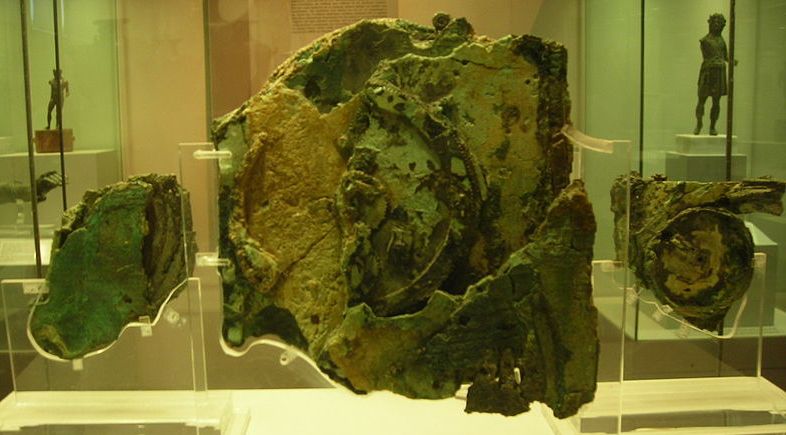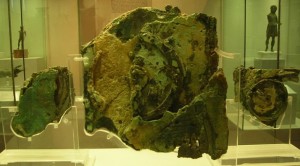Throwback Thursday – The Antikythera Mechanism

 The Antikythera Mechanism, an ancient, hand-crafted calculating machine featuring more than 30 bronze gears, is unlike anything of its time, many considering it to be more valuable than the Mona Lisa. The device was first discovered in 1900 by sponge divers sorting through an ancient shipwreck off the coast of Antikythera. Since then, scientists have been working to unlock the secret of its 80 known fragments.
The Antikythera Mechanism, an ancient, hand-crafted calculating machine featuring more than 30 bronze gears, is unlike anything of its time, many considering it to be more valuable than the Mona Lisa. The device was first discovered in 1900 by sponge divers sorting through an ancient shipwreck off the coast of Antikythera. Since then, scientists have been working to unlock the secret of its 80 known fragments.
Researchers have determined that the Antikythera Mechanism was most likely the size of a shoebox and featured exterior dials and inner gears that allowed ancient Greeks to determine the positions of the sun, moon, Mercury and Venus for a given date. Furthermore, new research confirms claims that the machine could also indicate the positions of Jupiter, Mars, and Saturn.
Using three-dimensional X-ray scanners, researchers unlocked the inner-workings of the device, and, with high-resolution surface imaging, faded inscriptions on the surface of the Antikythera Mechanism were brought to life. On the device’s front dials, the analysis uncovered markings that corresponded with the zodiac calendar as well as pointers for the sun and moon called the “golden little sphere” and “little sphere.” In addition, the back dials seem to have been used as solar and lunar eclipse predictors. According to researchers, utilizing two overlapping gear-wheels, the device could also imitate the moon’s intermittent movements which are caused by its elliptical orbit.
Interestingly enough, further analysis of this newly discovered lettering allowed researchers to date the device to around 150 to 100 B.C. rather than the previous radiocarbon estimate of 65 B.C.
